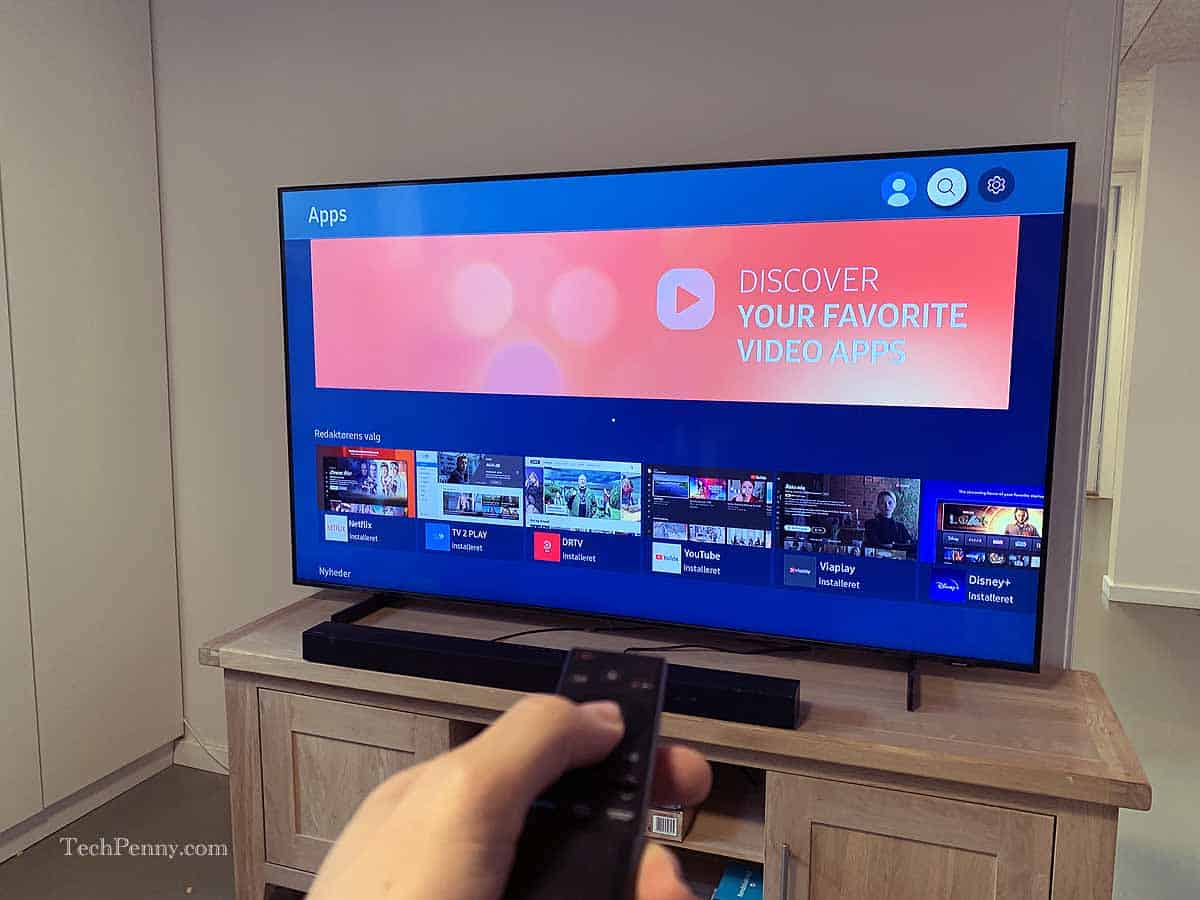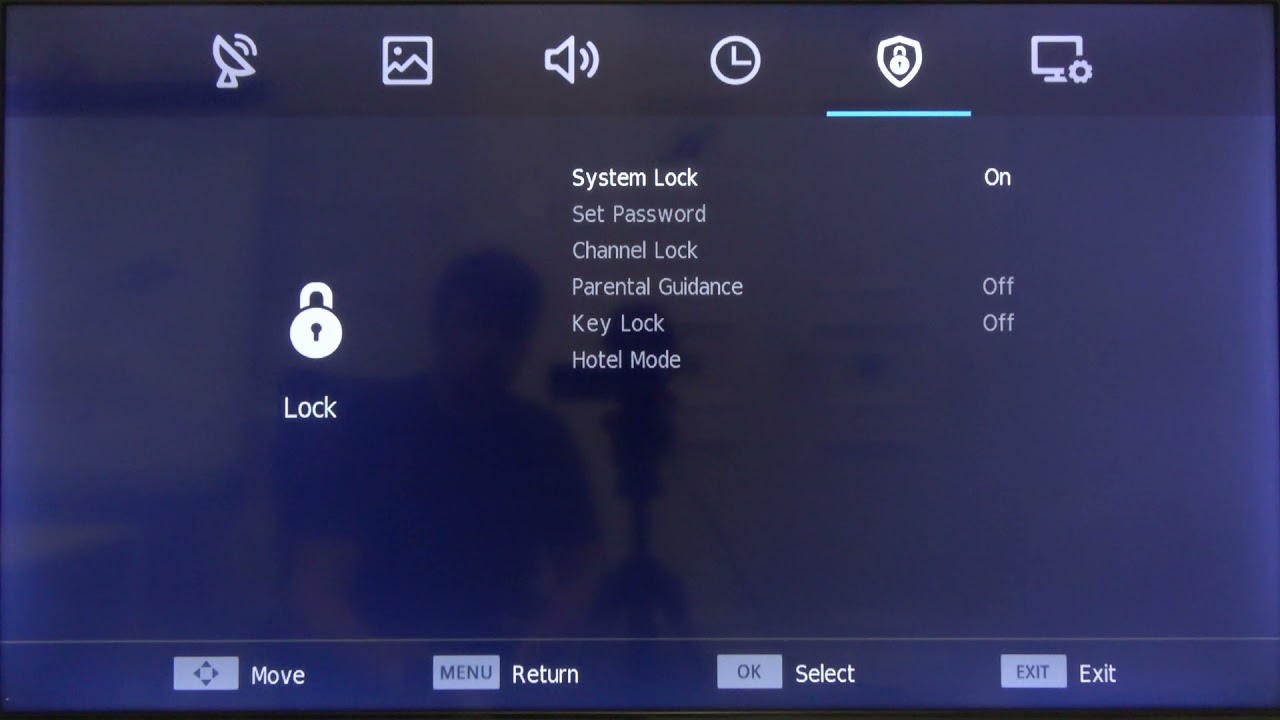Introduction
Welcome to the world of smart TVs, where you can stream your favorite shows, access a variety of apps, and enjoy the convenience of internet connectivity right from your living room. However, as you delve into the exciting realm of smart TVs, you may come across a not-so-pleasant aspect – ads.
Just like on other internet-connected devices, smart TVs often display ads that interrupt your viewing experience. These ads can be annoying and disruptive, distracting you from the content you’re trying to enjoy. Fortunately, there are ways to block ads on your smart TV, allowing you to have a more streamlined and immersive entertainment experience.
In this article, we will explore various methods to block ads on your smart TV and regain control over your viewing experience. Whether you want to eliminate ads completely or simply reduce their frequency, these techniques will empower you to customize your smart TV experience to your liking.
So, let’s dive in and discover how to block ads on your smart TV!
Why you might want to block ads on your smart TV?
The presence of ads on your smart TV can be a source of frustration for many reasons. Here are a few compelling reasons why you might want to consider blocking ads on your smart TV:
- Uninterrupted viewing experience: Ads can interrupt your favorite shows or movies, breaking the flow and immersion. By blocking ads, you can enjoy uninterrupted viewing, allowing you to fully immerse yourself in the content without distractions.
- Improved performance: Ads consume bandwidth and processing power, which can slow down your smart TV’s performance. Blocking ads can lead to faster loading times, smoother playback, and overall improved performance of your smart TV.
- Enhanced privacy: Some ads on smart TVs may collect data about your viewing habits and preferences. By blocking ads, you can protect your privacy and prevent unnecessary data collection from advertisers.
- Reduced data usage: Ads can consume a significant amount of data, especially when streaming content. By blocking ads, you can reduce data usage, which can be particularly beneficial if you have a limited internet plan or pay per usage.
- Eliminating irrelevant or repetitive ads: Advertisements on smart TVs are often targeted based on user data and preferences. However, they may not always be relevant or of interest to you. Blocking ads can help eliminate irrelevant or repetitive ads, ensuring that you only see content that is meaningful to you.
- Child-friendly environment: If you have children at home, you may want to create a more child-friendly environment on your smart TV. Blocking ads can help prevent the display of potentially inappropriate or age-inappropriate content.
Overall, blocking ads on your smart TV can contribute to a more enjoyable and personalized viewing experience. It allows you to take control of what you see and how you engage with your smart TV, creating a tailored entertainment experience that aligns with your preferences and priorities.
How to block ads on Smart TV?
Blocking ads on your smart TV may seem like a daunting task, but there are several effective methods you can use. Let’s explore these methods below:
- Use an ad-blocking DNS: One option is to use an ad-blocking DNS service such as AdGuard DNS or NextDNS. These services filter out ads at the DNS level, blocking them before they reach your smart TV. To use this method, you’ll need to manually configure your smart TV’s network settings to use the ad-blocking DNS servers.
- Configure your router’s DNS settings: Another way to block ads on your smart TV is by configuring your router’s DNS settings. By setting up a DNS server that blocks ads, all devices connected to your network, including your smart TV, will benefit from ad-blocking. This method eliminates the need to configure individual devices.
- Install a third-party ad-blocking app or browser extension: Some smart TVs allow you to install third-party apps or browser extensions that provide ad-blocking functionality. These apps or extensions work similarly to ad blockers on web browsers, filtering out ads from appearing on your smart TV.
- Use a streaming device with built-in ad-blocking capabilities: If your smart TV supports external streaming devices, you can consider using a device that has built-in ad-blocking capabilities. Streaming devices such as Roku or Apple TV may offer ad-blocking features that can enhance your viewing experience.
- Enable built-in ad-blocking features on your Smart TV: Some smart TVs have built-in ad-blocking features that can be enabled in the settings. These features are designed to block ads on various apps or platforms, providing a more ad-free viewing experience.
- Adjust privacy settings and opt-out of personalized ads: Many smart TVs offer privacy settings that allow you to control personalized ads. By adjusting these settings, you can opt-out of targeted advertising, reducing the number of ads you see on your smart TV.
- Disable or limit tracking on your Smart TV: Smart TVs often track your viewing habits to personalize ads. Disabling or limiting tracking can help reduce the number of targeted ads you encounter. Check your smart TV’s settings for options to disable tracking or limit data collection.
Remember to choose the method that is most suitable for your smart TV model and preferences. It’s important to note that some methods may require technical knowledge or advanced settings access. If you’re unsure, consult the user manual or seek assistance from the manufacturer or a technical expert.
By implementing one or more of these methods, you can effectively block ads on your smart TV and enhance your viewing experience without unwanted interruptions.
Use an ad-blocking DNS
One effective method to block ads on your smart TV is by using an ad-blocking DNS service. These services work by filtering out ads at the DNS level, preventing them from reaching your smart TV. Here’s how you can use an ad-blocking DNS:
- Research and choose an ad-blocking DNS service that suits your needs. Some popular options include AdGuard DNS and NextDNS.
- Access the network settings on your smart TV. This can usually be done through the settings menu.
- Locate the DNS settings or network configuration options within the network settings menu.
- Manually configure the DNS settings using the DNS server addresses provided by the ad-blocking DNS service you’ve chosen. These addresses can usually be found on the service’s website or in their documentation.
- Save your changes and exit the settings menu. Your smart TV will now use the ad-blocking DNS server to resolve domain names and block ads.
It’s important to note that the process of configuring DNS settings may vary depending on the smart TV model and operating system. If you’re unsure about the specific steps for your smart TV, refer to the manufacturer’s instructions or consult their support documentation.
Using an ad-blocking DNS service can be an effective way to block ads on your smart TV across different apps and platforms. However, it’s worth mentioning that ad-blocking DNS services may have limitations and can occasionally block legitimate content or affect the functionality of certain apps. If you encounter any issues, you can try disabling the ad-blocking DNS or switch to a different service to find the right balance between ad-blocking and content accessibility.
By utilizing an ad-blocking DNS, you can enjoy a more streamlined and ad-free viewing experience on your smart TV, allowing you to focus on the content you love without interruptions from unwanted ads.
Configure your router’s DNS settings
Another effective method to block ads on your smart TV is by configuring your router’s DNS settings. By setting up a DNS server that blocks ads, you can ensure that all devices connected to your network, including your smart TV, benefit from ad-blocking. Here’s how you can configure your router’s DNS settings:
- Access your router’s administration settings. This can typically be done by entering the router’s IP address in a web browser and logging in with your credentials.
- Navigate to the DNS settings or similar option within the router’s administration interface.
- Choose a DNS server that offers ad-blocking capabilities. Popular options include AdGuard DNS, Pi-hole, or NextDNS. You can find the necessary DNS server addresses on the provider’s website or in their documentation.
- Enter the DNS server addresses in the appropriate fields within the router’s DNS settings. Some routers may require primary and secondary DNS server addresses, while others only require a single address.
- Save the changes to your router’s DNS settings.
Once you’ve configured your router’s DNS settings to use an ad-blocking DNS server, all devices connected to your network, including your smart TV, will benefit from ad-blocking capabilities. This method eliminates the need to configure individual devices separately.
It’s important to note that changing the DNS settings on your router affects all devices on your network. Therefore, if you have devices that require unrestricted access to certain websites or services, consider using a DNS server that offers customizable blocking options or whitelisting features to allow access to specific domains.
Additionally, keep in mind that the process of configuring DNS settings may vary depending on the router model and manufacturer. If you’re unsure about the specific steps for your router, consult the router’s documentation or reach out to the manufacturer’s support for assistance.
By configuring your router’s DNS settings to use an ad-blocking DNS server, you can block ads on your smart TV and all other devices connected to your network. This method provides a centralized and comprehensive ad-blocking solution, ensuring a more enjoyable and ad-free viewing experience across your entire home network.
Install a third-party ad-blocking app or browser extension
If your smart TV supports the installation of third-party apps or has a built-in web browser, you can block ads by installing a third-party ad-blocking app or browser extension specifically designed for smart TVs. Here’s how you can do it:
- Check the app store or available app marketplace on your smart TV. Look for ad-blocking apps or browser extensions specifically designed for smart TVs.
- Install the ad-blocking app or browser extension onto your smart TV. Follow the on-screen instructions or prompts to complete the installation.
- Once installed, launch the ad-blocking app or enable the ad-blocking browser extension on your smart TV.
- Configure the ad-blocking app or browser extension according to your preferences. Most apps and extensions offer options to customize the level of ad-blocking and may provide additional features such as whitelisting specific websites or blocking specific types of ads.
- Start using your smart TV as usual, and the ad-blocking app or browser extension will work in the background, filtering out ads from appearing on your screen.
It’s important to note that not all smart TVs support the installation of third-party apps or browser extensions. Check your smart TV’s specifications and compatibility before attempting to install ad-blocking apps or extensions.
Additionally, keep in mind that some ad-blocking apps or extensions may have limitations or might not be as comprehensive as other methods. They may only work within the specific app or browser they are designed for and may not block ads in all areas of your smart TV’s user interface or across all apps.
If you’re unable to find dedicated ad-blocking apps or browser extensions for your smart TV, consider using a streaming device with built-in ad-blocking capabilities or explore other methods mentioned in this article.
By installing a third-party ad-blocking app or browser extension on your smart TV, you can effectively block ads and enjoy an ad-free viewing experience. These apps or extensions offer a convenient and user-friendly way to customize your ad-blocking preferences without the need for complex configuration or technical expertise.
Use a streaming device with built-in ad-blocking capabilities
If your smart TV allows external streaming devices, another option to block ads is to use a streaming device that comes with built-in ad-blocking capabilities. These devices are designed to provide an ad-free viewing experience and offer various features that enhance your entertainment experience. Here’s how you can utilize a streaming device with built-in ad-blocking capabilities:
- Research and choose a streaming device that offers built-in ad-blocking capabilities. Popular options include devices like Roku, Amazon Fire TV, or Apple TV.
- Purchase the streaming device of your choice and set it up according to the manufacturer’s instructions. This typically involves connecting it to your TV and connecting it to your home network.
- Access the streaming device’s settings menu or control panel.
- Locate the ad-blocking settings or options within the device’s settings menu.
- Enable the ad-blocking feature or adjust the ad-blocking settings according to your preferences. The specific options available may vary depending on the streaming device model.
- Start using your smart TV by accessing streaming apps and content through the streaming device. The built-in ad-blocking capabilities will filter out ads, providing you with an ad-free viewing experience.
Using a streaming device with built-in ad-blocking capabilities offers a seamless and hassle-free way to enjoy your favorite shows and movies without interruptions from ads. These devices are designed to optimize your entertainment experience and provide a streamlined interface that minimizes the presence of ads.
It’s important to note that while streaming devices with built-in ad-blocking capabilities are effective in blocking ads within the supported apps and interfaces, they may have limitations. Some ads may still appear in certain apps, especially if the ads are integrated into the content itself rather than being served through a separate advertising framework.
If you’re looking for a comprehensive ad-blocking solution that covers all apps and interfaces on your smart TV, you may want to explore other methods mentioned in this article, such as using an ad-blocking DNS or configuring your router’s DNS settings.
By utilizing a streaming device with built-in ad-blocking capabilities, you can enjoy an ad-free viewing experience and focus on the content you love without the distractions caused by advertisements on your smart TV.
Enable built-in ad-blocking features on your Smart TV
Many smart TVs come equipped with built-in ad-blocking features that allow you to block ads directly on your device. These features are designed to provide a more ad-free viewing experience and may vary depending on your smart TV’s make and model. Here’s how you can enable built-in ad-blocking features on your smart TV:
- Access the settings menu on your smart TV. This can usually be done by pressing the “Menu” or “Settings” button on your remote control.
- Navigate to the “Network” or “Internet” settings section. The specific location of the ad-blocking settings may vary depending on your smart TV’s interface.
- Look for an option related to “Ad Blocking” or “Advertisement” within the network settings. This option may be found under “Privacy” or “Advanced” settings.
- Enable the ad-blocking feature by toggling the switch or selecting the appropriate option. Some smart TVs may offer additional customization options, allowing you to adjust the level of ad-blocking or specify which apps or sources to block ads from.
- Save your settings and exit the menu.
Once you enable the built-in ad-blocking feature on your smart TV, it will work within the supported apps or platforms on your device, helping to block ads and create a more ad-free viewing experience.
While enabling the built-in ad-blocking features on your smart TV is a convenient way to block ads, it’s important to note that the effectiveness of these features may vary. Some smart TVs may only block ads within specific apps or platforms, while others may provide a more comprehensive ad-blocking experience.
If you find that the built-in ad-blocking feature on your smart TV is not effective enough or does not cover all the apps or interfaces you use, you can explore other methods mentioned in this article, such as using an ad-blocking DNS or installing third-party ad-blocking apps or browser extensions.
By enabling the built-in ad-blocking features on your smart TV, you can enjoy an ad-free viewing experience that aligns with your preferences and enhances your overall entertainment experience.
Adjust privacy settings and opt-out of personalized ads
Smart TVs often collect data about your viewing habits and preferences to deliver personalized ads. However, if you want to reduce the number of ads you see on your smart TV, you can adjust the privacy settings and opt-out of personalized ads. Here’s how you can do it:
- Access the settings menu on your smart TV. This can typically be done by pressing the “Menu” or “Settings” button on your remote control.
- Navigate to the “Privacy” or “Personalization” settings section. The specific location of the privacy settings may vary depending on your smart TV’s interface.
- Look for an option related to “Ad Preferences” or “Personalized Ads”. This option may be found under “Privacy”, “Account”, or “Online Services” settings.
- Open the “Ad Preferences” or “Personalized Ads” option and review the available settings and options.
- Disable the “Personalized Ads” or “Ad Tracking” feature by toggling the switch or selecting the appropriate option. This will opt you out of targeted advertising based on your viewing habits.
- Save your settings and exit the menu.
By adjusting the privacy settings and opting out of personalized ads on your smart TV, you can greatly reduce the number of targeted ads you see. This means that the ads you encounter will be less specific to your viewing habits and preferences.
It’s important to note that opting out of personalized ads does not guarantee the complete absence of ads on your smart TV. You may still see general advertisements that are not tailored to your interests.
Additionally, be aware that the steps to adjust privacy settings and opt-out of personalized ads may differ depending on your smart TV’s make and model. If you can’t locate the exact settings, refer to your smart TV’s user manual or consult the manufacturer’s support documentation.
If you’re concerned about your privacy or want to further limit data collection, consider exploring other methods mentioned in this article, such as using an ad-blocking DNS or configuring your router’s DNS settings.
By adjusting the privacy settings and opting out of personalized ads on your smart TV, you can take control of your advertising preferences and enjoy a more customized viewing experience that aligns with your privacy concerns and preferences.
Disable or limit tracking on your Smart TV
Smart TVs often track your viewing habits and behavior to personalize ads and provide recommendations. If you’re concerned about privacy or want to reduce the number of targeted ads, you can disable or limit tracking on your smart TV. Here’s how:
- Access the settings menu on your smart TV. This can usually be done by pressing the “Menu” or “Settings” button on your remote control.
- Navigate to the “Privacy” or “Security” settings section. The specific location of these settings may vary depending on your smart TV’s interface.
- Look for options related to “Tracking” or “Data Collection”. These options may be labeled as “Viewing History”, “Data Sharing”, or similar terms.
- Disable tracking or limit data collection by toggling the switches or selecting the appropriate options. You may have the option to disable tracking entirely or choose to limit the collection of specific types of data.
- Save your settings and exit the menu.
By disabling or limiting tracking on your smart TV, you can reduce the amount of data collected about your viewing habits and preferences. This can result in a decrease in the number of targeted ads you see on your smart TV.
It’s important to note that disabling tracking may affect the personalized features and recommendations provided by your smart TV. You may experience less accurate content suggestions or fewer tailored recommendations as a result.
The steps to disable or limit tracking may vary based on your smart TV’s make and model. If you’re unable to find the exact settings, consult your smart TV’s user manual or the manufacturer’s support documentation for more specific instructions.
If you’re still seeing ads after disabling or limiting tracking, consider exploring other methods mentioned in this article, such as using an ad-blocking DNS or configuring your router’s DNS settings, to further enhance your ad-blocking capabilities.
By disabling or limiting tracking on your smart TV, you can have greater control over your privacy and reduce the amount of personalized advertising you encounter, creating a more tailored viewing experience that aligns with your preferences.
Conclusion
Blocking ads on your smart TV can greatly enhance your viewing experience by reducing interruptions and distractions. Whether you want to completely eliminate ads or simply minimize their impact, there are various methods you can employ to achieve this.
Start by exploring options such as using an ad-blocking DNS or configuring your router’s DNS settings, which offer network-level ad-blocking capabilities. These methods can filter out ads before they reach your smart TV, ensuring a more ad-free environment.
If your smart TV supports it, consider installing third-party ad-blocking apps or browser extensions designed specifically for smart TVs. These can provide targeted ad-blocking within the apps or browsers they are designed for, giving you more control over your ad preferences.
Another option is to use a streaming device with built-in ad-blocking capabilities. These devices often offer a seamless ad-blocking experience, enhancing your entertainment without the disruptions caused by ads.
Additionally, take advantage of your smart TV’s built-in ad-blocking features if available. These features provide ad-blocking within the device itself, eliminating the need for external solutions.
Furthermore, adjusting privacy settings and opting out of personalized ads can help reduce the number of targeted ads you see on your smart TV. Similarly, disabling or limiting tracking can protect your privacy and limit the data collected about your viewing habits.
Remember to choose the method or combination of methods that best suits your preferences and technical capabilities. Some methods may require more technical knowledge than others, so it’s important to refer to your smart TV’s documentation or consult the manufacturer’s support if needed.
By implementing these strategies, you can customize your smart TV experience, enjoy uninterrupted viewing, improve performance, protect your privacy, and reduce data usage. With a more ad-free environment, you can focus on the content you love and have a truly immersive entertainment experience on your smart TV.

























